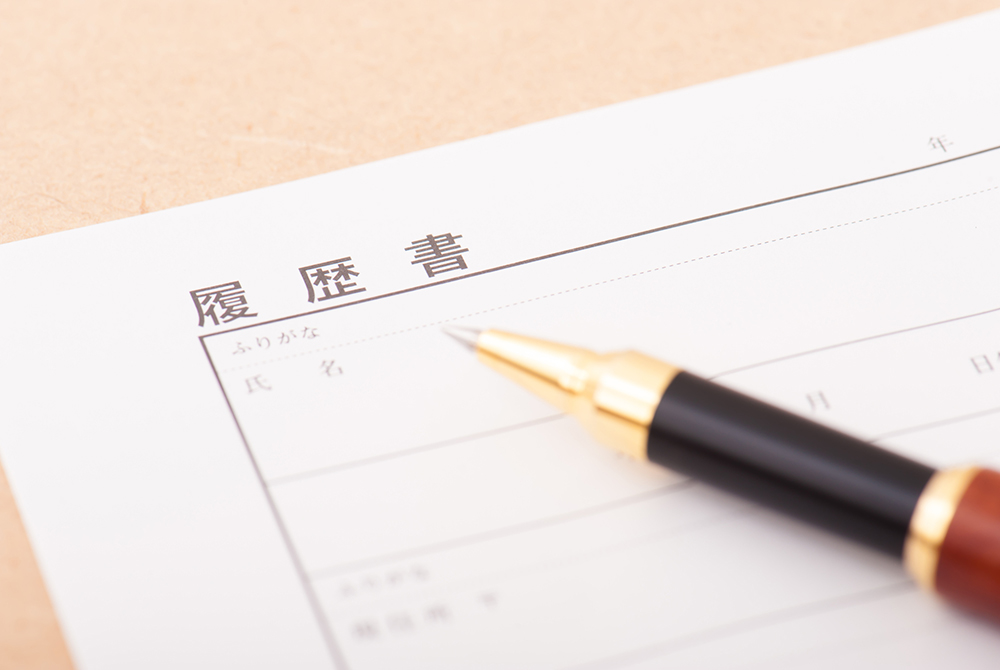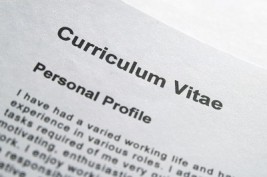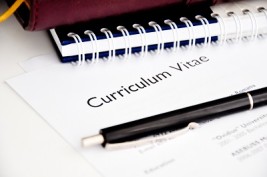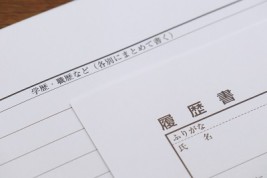“It’s difficult to write a resume in Japanese” “I don’t know how to write it because it’s my first time” “How important is a resume?” There may be many foreigners who think this way.
In Japan, the resume is the standard for passing before continuing to the interview. That’s why you need to write your resume in correct Japanese, while following Japanese business manners.
A resume can be called the first barrier. But, if you learn how to write it properly, anyone can create a high-quality resume.
This article is for foreigners who do not know how to write resumes, such as basic information like name, address, education/work history, license/qualifications, motivation, hobbies / special skills, etc. Let’s carefully explain how to write a resume.
If you are a foreigner who has trouble writing a Japanese resume, please use this text as a reference. Let’s aim to create a resume that makes people think: “I want to meet this person!”.
Contents
- 1 Resume Writing Rules
- 2 How to write a resume -basic information-
- 3 How to write a resume -Education History and Work History-
- 4 How to write a resume -Licenses and Certifications-
- 5 How to write a resume -Motivation/Reasons for application-
- 6 How to write a resume -Hobbies/Special skills-
- 7 How to write a resume -Personal aspirations, Commuting, Marital Status-
- 8 Write a high-quality resume and work for a Japanese company of your choice!
Resume Writing Rules
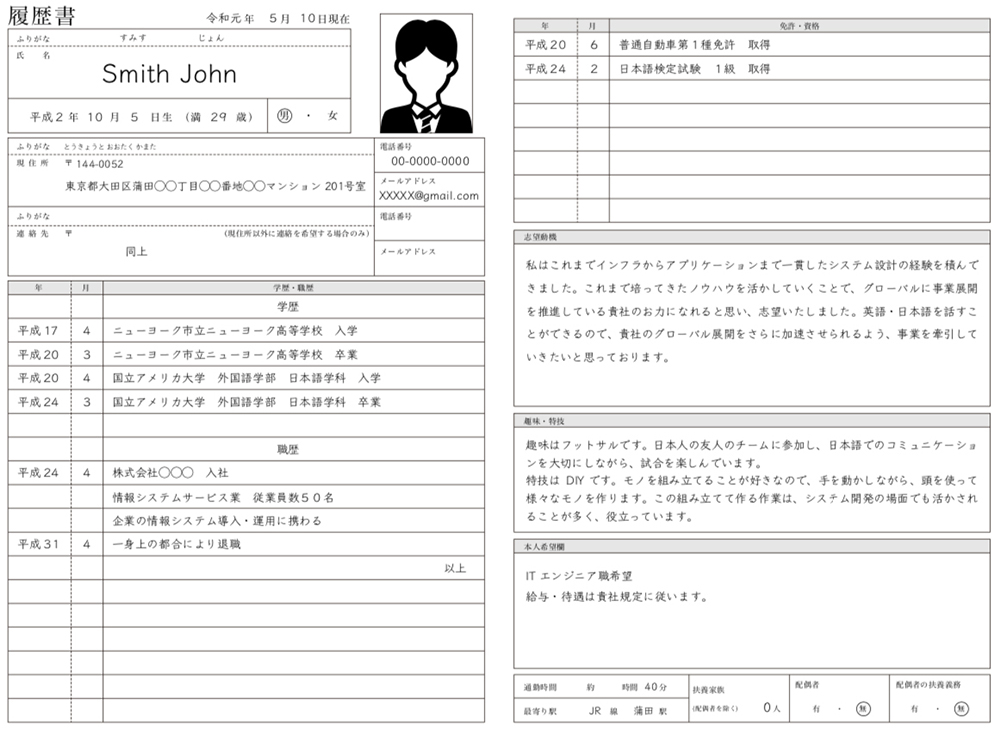
Before you start writing your resume, there are writing rules that you should know first. The two most important rules are:
①If you make a mistake, write a new resume.
②Do not re-use resumes with the same content.
In case of making a mistake in a handwritten resume, do not attempt to correct the mistake by crossing it out or using whiteout. Since it will give a bad impression, it’s better to rewrite it.
You can avoid these mistakes by first drafting with a pencil and then writing above it with a black ballpoint pen. Recently, an increasing number of companies accept resumes created on computers. However, it is important to understand that there are still many companies to which resumes should be handwritten.
It is also important not to re-use the same resume. People who work at companies are professionals at reviewing resumes. For this reason, if you use the same resume that was also used for another company, it won’t seem solid and will make difficult to communicate your motivation to join the company. Create a resume for each company. That is a vital point to pass the document screening.
There are other writing rules. It is important to be careful with Japanese polite sentence closer, “masu” (-ます), “-desu” (-です), and to make sure that all the items are filled in and that there are no typographical mistakes or omissions.
If you register on a career change website or to a career change service, you can rest assured that a reliable agent will check your resume.
How to write a resume -basic information-
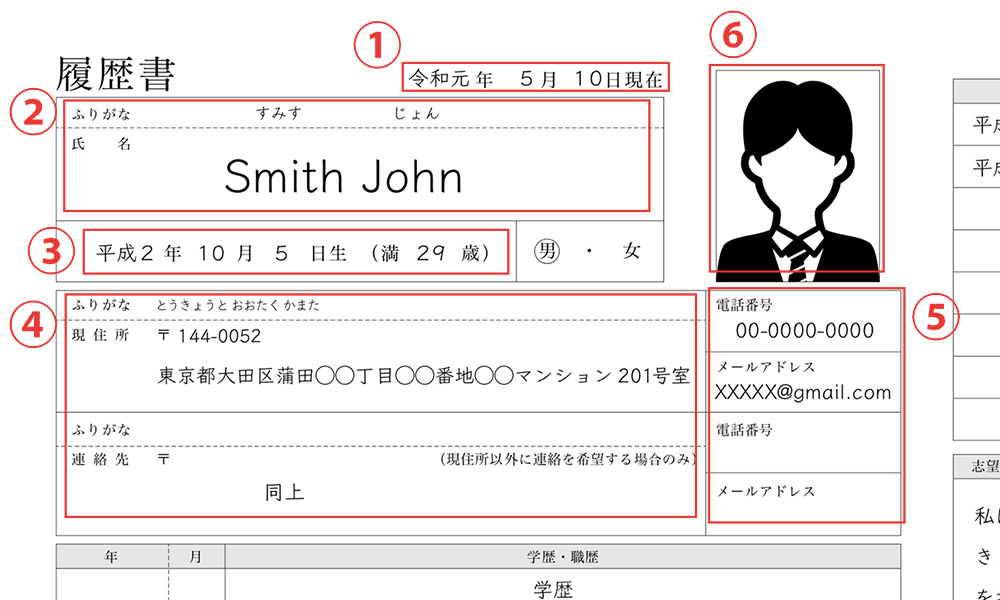
Let’s understand how to write a resume while valuing the rules for writing a resume. First, I will explain how to write basic information on resumes.
①Date
Enter the date you will submit your resume, not the date you wrote your resume. In case of mailing the application, enter the mailing date. Please fill in the date of the interview if you are taking it to an interview. Also, let’s make compatible the year writing into either the Japanese calendar ex. 「令和X年」 or the Western calendar ex. 「20XX年」.
②Name
Although it is a name, write your name in the place where “氏名” is written. Make sure to leave a space between the last name and the name. In the furigana above the name field, enter “Hiragana” or “Katakana” according to your resume.
To identify which one to write, use Hiragana if the word “Furigana” is written in Hiragana, and Katakana if the word “Furigana” is written in Katakana. In Japan, the family name is written in front and the first name is written behind.
③Birth date and age
Write it according to the calendar type that is written on the date of ①, “Japanese calendar” or “Western calendar”. Enter your current age at the time you submit or mail your resume.
④Address and contact information
Enter the address without omitting zip code, prefecture, address, building name, and room number. Please fill in the Furigana correctly. If the contact address is the same as the address, enter “same as above”. If you would like to write another contact, do not omit it.
⑤Phone number/email address
f you do not have a fixed phone, enter the mobile phone number only. Please enter your web e-mail address, not the mobile phone e-mail address. The company will contact you with the information listed here, so be sure not to make any mistakes.
⑥Photo
Many foreigners may be wondering where to shoot. It is common to take photos for resumes at ID photo booths installed at train stations and photo studios.
In that case, it is basic to shoot it with a black or blue suit and no hat. Paste the front photo (bust-up photo) taken within 3 months to your resume. When pasting, cut it into a size of 3cm wide x 4cm long, and paste it with glue.
How to write a resume -Education History and Work History-
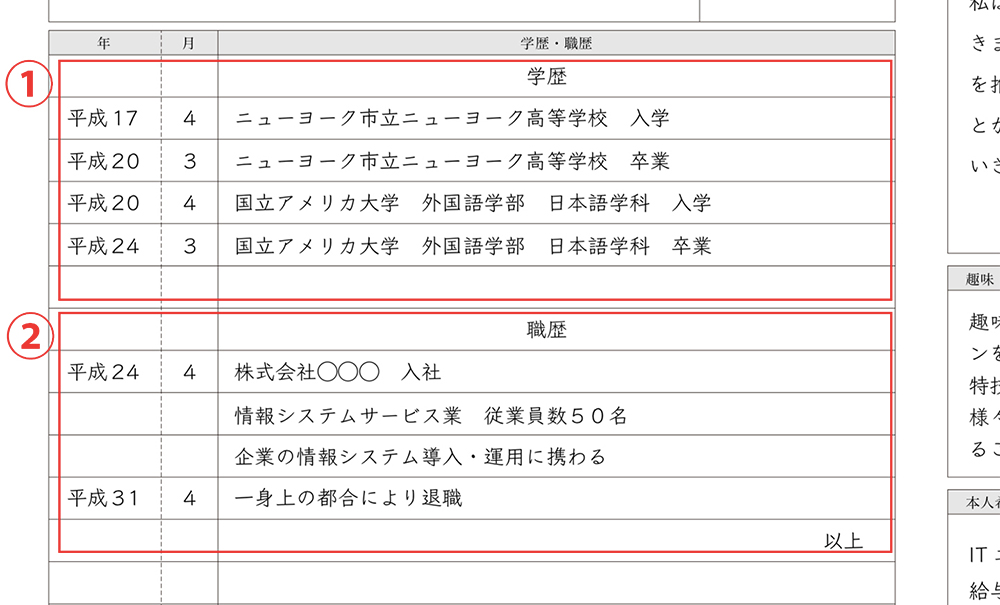
①Education history
First of all, “Education History” is clearly stated in the center of the first line. The educational background will be written from the second line, the general rule is to write from the previous academic background.
The final educational background is not “the last school you graduated” but “the highest educational institution”. For example, if you graduate from a university and enter a vocational school, the university has a higher standard as an educational institution, so you should write first “university” as previous academic background.
The school name must be an official name. Please write properly department, major, major subject, etc. Enrollment and graduation years must be displayed the same as the date (Japanese or Western calendar). If you dropped out of school, indicate “dropped out”, and if you are currently in school, state “expected graduation”.
②Work history
Write a line below the academic background and specify “work history” in the center. In the order of the company where you worked, enter “year of hire, company name, type of industry, number of employees, concise job description” and “year of leave/reason for retirement”.
If the reason for retirement is for personal reasons, specify “retirement due to personal reasons”, and if you retire due to dismissal, state “retirement due to company circumstances”. Also, if you are currently working, you have to state “Present”. Finally, write “End” in the last line.
How to write a resume -Licenses and Certifications-
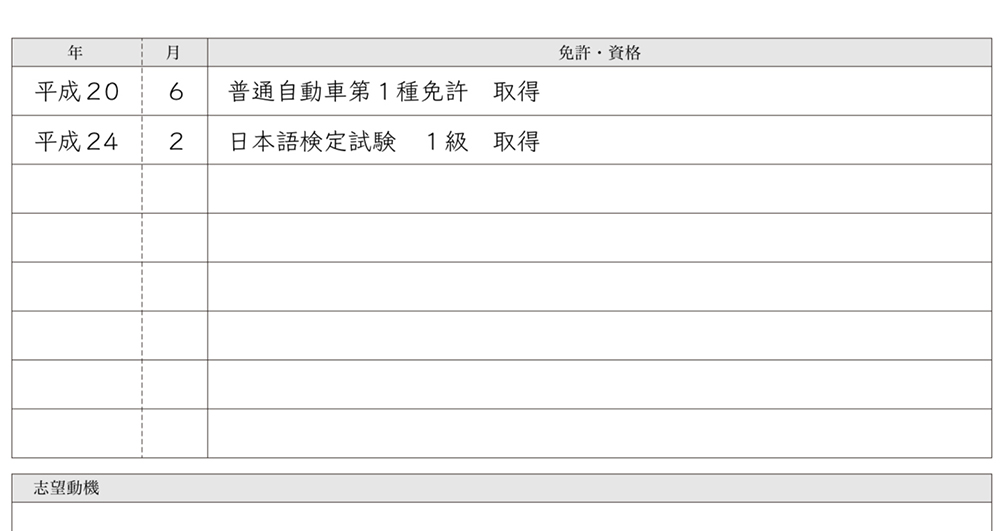
“License/Qualification” is in principle the official name. Also, it is necessary to indicate the year of acquisition of each one correctly. It’s important to make sure to state at the top the license or qualification that can be used in the company you want to apply. If you have not acquired any, specify “None”.
How to write a resume -Motivation/Reasons for application-
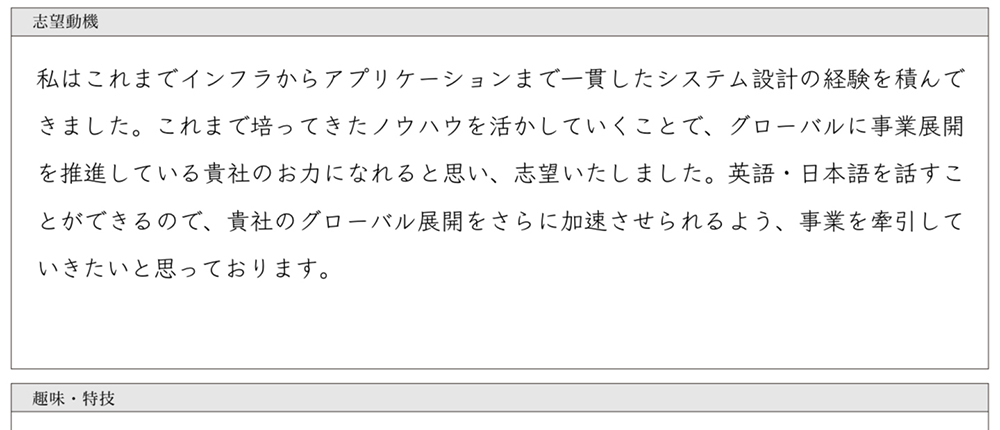
In the resume, the “Motivation” field is the one that can promote yourself the most. It is important not to write a reason that you can use to apply to any company. You should investigate the company you want to apply, and to concretely write what kind of experience you have had, your skills, and what you want to do after joining the company.
I have a large experience in system design that goes from infrastructure to application. I hope that by making use of the know-how I have cultivated so far; I would be able to help you to promote global business development. I can speak English and Japanese. I want to drive the business to further accelerate your global expansion.
<Advice>
I’ll explain the difference between “Kisha” and “Onsha”, both meaning is “your company”.
Kisha (貴社): Use this when writing resumes or emails.
Onsha (御社): Use for interviews and business talks.
Although it is a small detail, by remembering this, it can give a good impression by using it properly.
How to write a resume -Hobbies/Special skills-

Hobbies and special skills may become a topic in conversations with interviewers. For this reason, avoid “nothing in particular” or to leave it in blank. If your hobbies and special skills are related to your work, it will lead to appeal. Please try to include specific details. Also, please note that hobbies and feats that give negative impressions of gambling and crimes are better to avoid.
My hobby is futsal. I participate in a team with Japanese friends. I communicate in Japanese while enjoying playing the game. One of my special skills is DIY. I like to assemble things, to move my hands and make various things using my head. I often use and find useful this construction skill in system development situations.
How to write a resume -Personal aspirations, Commuting, Marital Status-
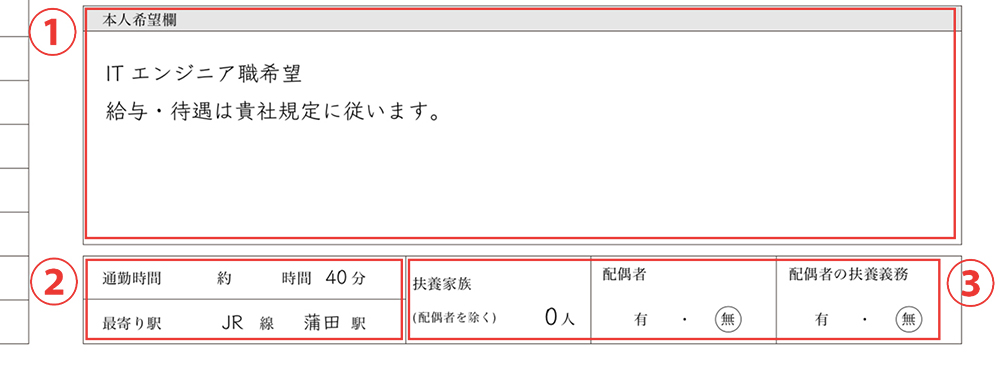
①Personal aspirations
Clarify the desired job type. It is a rule of principle to state that your workplace, salary, and treatment can be according to the company regulations.
②Commuting
Specify the commute time to the company and your nearest station. As a general rule, commuting time should be 90 minutes or less. If you live in a remote area or are coming to Japan, it is necessary to state that you will be able to commute without problem after joining the company. “最寄り駅” means the closest station from home.
③Marital Status
Foreigners who are married will circle “Yes” in the marital status field. If you are single, please circle “No”.
Write a high-quality resume and work for a Japanese company of your choice!
Many foreigners are reluctant to Japan’s resume. However, if you learn how to write it properly, you can create a resume that will interest companies.
Let’s create a high-quality resume, by keeping correct Japanese expressions and Japanese business manners. As long as you write politely, you will have the chance to work for a Japanese company of your choice.
